 Let’s talk about the Israelite presence in East Africa. Many people are becoming more aware of the presence of Israelites in West African regions and their connection to the Trans-Atlantic slave trade (Deuteronomy 28:15-68), but what about East Africa? We will find that the history of Israelites in East Africa is just as rich as that of their West African relatives. As we review the history of the presence of Israelites in East Africa, we will discover that many Israelites entered into East African regions long before the Roman Conquest of Jerusalem in 70 AD. Multiple waves of Israelite migrations into foreign lands and their vast populations have caused many to misidentify these Israelites as Hamitic. In this particular article we will attempt to provide some history on a few different Israelite migrations into East Africa as well as some information on both how and when they arrived. We will also brief cover some of the more distant countries that the Israelites travelled to after reaching East Africa. All of this information will be provided in attempt to demonstrate the historical validity of the Biblical fact that the Israelite bloodline has been scattered into EVERY kingdom on Earth.
Let’s talk about the Israelite presence in East Africa. Many people are becoming more aware of the presence of Israelites in West African regions and their connection to the Trans-Atlantic slave trade (Deuteronomy 28:15-68), but what about East Africa? We will find that the history of Israelites in East Africa is just as rich as that of their West African relatives. As we review the history of the presence of Israelites in East Africa, we will discover that many Israelites entered into East African regions long before the Roman Conquest of Jerusalem in 70 AD. Multiple waves of Israelite migrations into foreign lands and their vast populations have caused many to misidentify these Israelites as Hamitic. In this particular article we will attempt to provide some history on a few different Israelite migrations into East Africa as well as some information on both how and when they arrived. We will also brief cover some of the more distant countries that the Israelites travelled to after reaching East Africa. All of this information will be provided in attempt to demonstrate the historical validity of the Biblical fact that the Israelite bloodline has been scattered into EVERY kingdom on Earth.
“And I will cause them to be removed into all kingdoms of the earth, because of Manasseh the son of Hezekiah king of Judah, for that which he did in Jerusalem.” – Jeremiah 15:4
How and when could the Israelites have arrived in East Africa? The answer to these questions is, various ways and at various different times. However, generally speaking, the Israelites entered into East Africa, mostly, by way of Egypt, following the Nile River south as it parallels the Rift Valley. Following this route down the eastern coasts of Africa has left various branches Israelite communities scattered throughout the region. These various Israelite communities (some remaining separate while others intermarried with local peoples) that settled in East Africa subsequently travelled to the Far East.
A few examples of how the Israelites entered into East Africa can be found in the Bible. The history of the Hebrew Israelites’ records various accounts of Israelite journeys between Egypt and the land of Canaan.
There are many Biblical examples of Israelites migrating into Africa by way of Egypt. Abraham travelled to Egypt long before the Israelites entered into that country. Joseph, one of the 12 sons of Jacob, was sold into slavery and eventually arrived in Egypt from Canaan. Many years, later, Christ also travelled to Egypt where he hid for a time until returning to the land of the Israelites. These and many other examples of Israelite migrations into Africa can be found in the Bible.

Map of Abraham’s migration from Babylon to Syria, through Canaan and into Egypt before returning to Canaan

Map of Joseph’s (Jacob’s youngest son, before the birth of Benjamin) journey into Egypt after being sold to Ishmaelites
After entering Africa by way of Egypt, many of the East African branch of Israelites followed the Nile River and Rift Valley southward. It is interesting to note that the biblically recorded migrations of the Hebrew Israelites closely resembles what historians have labeled as the ‘Bantu Expansion.’
Following the Nile River and Great Rift Valley southward, the Israelites passed through and settled in many areas in the land of Kush.
The Israelites also settled the areas beyond the land of Kush, which we will discuss shortly. Let’s first discuss an early Israelite presence in Ethiopia.
The modern country of Ethiopia and peoples of Ethiopia are often identified with the biblical land of Kush. The ancient kingdom of Kush encompassed areas of modern southeast Sudan and northwest Ethiopia. A few years prior to the Assyrian captivity of the Northern Kingdom of Israel, some of the Israelites foresaw the coming desolation and decided to leave Israel before being taken captive. Eldad Ha Dani (the Danite) appeared in a thriving Egyptian Jewish community during the 9th century AD and told a history of when and how a group of Israelites arrived in the land of Kush.

Isaiah was a prophet during the time of King Ahaz of Judah when, according to Eldad the Danite, a portion of the tribe of Dan left Israel to resettle in Egypt and further south in the land of Cush.
It is very interesting to note that according to Eldad the Danite and the Beta Israel themselves (the Ethiopian “Jews”), Israelite tribes (primarily from the tribe of Dan) had arrived in East African territories even during the Exodus. This is interesting because Greek history states that the Danites (and other Israelite tribes) had also arrived and settled in Greece and other Mediterranean countries, both prior too and during the Exodus. Obviously, at the same time Mediterranean colonization were occuring, there were Israelites migrating south of Egypt. Clearly, Israelites had migrated to many lands outside of Canaan even prior to the Exodus under Moses. However, let us focus on Eldad’s story of the Israelite presence in East Africa during the beginnings of the Kingdom of Kush. Incidentally, the Kingdom of Kush was founded around the same time that the Assyrians were conquering the Northern Kingdom of Israel (c. 720 BC). Shortly before the conquest of the Northern Kingdom of Israel, the tribe of Dan and some branches of other Israelite tribes decided to leave their homeland to avoid trouble. According to Eldad the Danite, they eventually settled in Egypt later moved further south into parts of modern Sudan and Ethiopia—the land of Kush.
Some Israelite tribes, according to Eldad, left the land of Assyria, even after their captivity, and they also settled in Ethiopia.
The presence of Israelite tribes arriving in Hamitic lands after the Assyrian captivity can be attested to by other histories outside of Eldad’s. The kingdom of Kush ruled from the 8th century BC until they were conquered by the Assyrians.
According to Yoruba tradition, there was a great migration of Assyrian refugees (Israelites) that arrived in Kush around the same time as the Assyrians were conquered by the Medes/Persians. The previous conquest of the Kingdom of Kush certainly made the Israelites during the Assyrian captivity aware of the existence of Israelite communities in the land of Kush, which is where they fled to during the collapse of the Assyrian empire before establishing themselves in West African by way of the Sahel.

The great migration of Israelite refugees from the collapsing Assyrian Empire c. 605 B.C. according to Yoruba tradition.


Encyclopedia of the Jewish Diaspora: Origins, Experiences, and Culture, Volume 1, By Mark Avrum Ehrlich, PG 454

The modern country of Yemen is located within the Kingdom of Sheva on the map above where ‘Marib’ is located. A large Israelite community existed there.
Further support for the fact that the Yoruba of Nigeria and other Israelites had arrived in African territories by way of Syria or Yemen can be found in the etymology of the name Abyssinia (another name for Ethiopia). Many branches of different Israelite tribes that migrated into Yemen and Ethiopia named the towns that they lived in ‘Gaza,’ which meant ‘emigrants’. The Israelite ‘emigrants’ or Gaza used this term to refer to themselves as well as the lands that that emigrated to and inhabited in Kushite territory.
The historical records of the Greeks have also made us aware of the fact that a wave Israelites from Syria also immigrated to the land of Abyssinia during the time of Alexander “the Great”. The many waves of Israelites arriving in Africa from Syria, and the historical documentation of such events by people other than the Yoruba themselves, provides further credence that the Yoruba and other Israelites did indeed come from the Syria/Palestine area before settling in African lands.

Selections from the Asiatic Journal and Monthly Register for British India and its Dependencies, Volume 2, PG 1007
These different waves of Israelite migrations into East African lands, that can be dated back to times even before the Israelite Exodus from Egypt, provide us with the historical background to associate many different East African peoples with the descendants of the ‘Lost Tribes’ of Israel. One such group of Israelites (also known as Syro-Jews) in East Africa, in the land of Abyssinia/Ethiopia, are also known as Falasha. The term Falasha (a derogatory term meaning foreigners/exhiles/refugees) is a term that refers to Beta Israel—The Israelites of Ethiopia.

The Sahel region: a belt up to 1,000 km (620 miles) wide that spans the 5,400 km in Africa from the Atlantic Ocean to the Red Sea
Different branches of the Israelites entered into Africa by trade routes through Egypt, Arabia and Yemen. Some established themselves in the West African Negro-land, such as the Yoruba people of Nigeria, by way of the Sahel, while others continued traveling southward down the Nile and Great Rift Valley to establish themselves in the East African Negroland that we will discuss later.
Returning to the history of Eldad the Danite, we understand that’s branches of several of the tribes of Israel migrated from Northern Israel, through Egypt and into the land of Kush. According to Eldad, the time of this migration occurred during the 8th year of the reign of King Ahaz of Judah. Some scholars date the reign of Ahaz from 732 BC to 716 BC, while others believe it to be from 744-728 BC. With these time frames we can derive an estimate that the migration of Israelites from Israel to Kush, according to the history of Eldad, began sometime between 736 and 724 BC but definitely before the Assyrian Captivity of the Northern Kingdom of Israel, c 721 BC. At the time of the Israelite arrival, the Kingdom of Kush was ruling of the land of Kush as well as the land of Mitzraim (Egypt).
THE STORY OF NUBIA
The capital of the Kingdom of Kush at the time of the Israelites arrival, both before and after the Assyrian captivity of Israel, was Meroe. Meroe was a very important city-state of the Kingdom of Kush that was strongly influenced by the Egyptians. Over 200 pyramids can be found in Meroe, which is evidence of the Egyptian influence on the Kingdom of Kush. This same Egyptian culture that strongly influenced the Kingdom of Kush was later found across the Indian Ocean.

“In addition to Eldad Ha-Dani, Obadiah of Bertinoro during the fifteenth century suggests that the spices sold by the Kushites “come from” (Abrahams & Montefiore, 1889) the Beta Israel, and Chief Rabbi David ibn Zimra of Egypt in the sixteenth century identifies the Beta Israel as the Jews from “the Land of Cush” (as cited in Bleich, 1977, p. 302). After tedious research, Kessler (2012, p. 60) analyzes: Scholars agree that the Jewish religion had a considerable following in the Axumite state before the time of King Ezana and as it is probable that there was a Jewish presence in the neighboring kingdom of Meroë with which Axum was in communication Jewish influences could have followed the well-worn routes across the border by way of the Blue Nile and Atbara rivers, while similar, though somewhat different, influences could also have penetrated from south Arabia and subsequently disappeared.” – Early Jews of Aksum, by Ibrahim Omer, Genetic Literacy Project
It is very interesting to note that the presence of Israelites in land of Kush as well as in India is documented in the Holy Bible. During the time of Mordecai and the Persian Empire (stretching from the land of Kush on the West unto India on the East) a letter was written that addressed, among many peoples, all the Jews of the 127 Persian provinces. These provinces included Kush and India, which provides Biblical support for the fact that Israelites lived in the lands of Kush and also in India, at least as far back as 5th century BC. We also know that some of these Israelites were the products of the 7th century BC Assyrian captivity that placed some Israelites in the cities of the Persians and Medes. This gives us an estimate of, at least, three centuries of Israelite presence in Assyrian and Persian territories, which included both Kush and India.
“Then were the king’s scribes called at that time in the third month, that is, the month Sivan, on the three and twentieth day thereof; and it was written according to all that Mordecai commanded unto the Jews, and to the lieutenants, and the deputies and rulers of the provinces which are from India H1912 unto Ethiopia, an hundred twenty and seven provinces, unto every province according to the writing thereof, and unto every people after their language, and to the Jews according to their writing, and according to their language.” – Esther 8:9
A fact of further interest comes to light when we examine the Hebrew word translated as India in the King James Version biblical text. The word of for India, in regards to one of the 127 Persian provinces, is:
Strong’s H1912 – הֹדוּ Hôdûw, ho’-doo; of foreign origin; Hodu (i.e. Hindustan):—India.
- India = “flee away” or ” give ye thanks”
- the country surrounding the Indus, mentioned as the eastern border of the empire of Ahasuerus
This same region of India, known to the ancient Hebrew Israelites as Hodu, is identified with Hindostan. Hindostan is a word of Persian origin and it’s meaning provides more support for the fact that Israelites lived in India/Hindostan.

The Persian meaning of the name Hindostan can be translated as ‘Black land’ or ‘Black country’. This was in reference to the people of the land who were classified as ‘Blacks’. This is very significant, as we have already briefly noted the influence of Egypt and Nubia Kush that arrived in India by way of the India Ocean trade routes. History also bares witness to the presence of Israelite-Phoenician ships, during the time of King Solomon that also arrived in India, establishing trade colonies. Among these Black people that arrived in India from various lands ruled by blacks, were heavy populations of Israelites who are also classified as Blacks/Negroes. In fact, the West African land of the blacks, known as Negroland, supplied the Negro populations that later spread down the western coasts of Africa and across the Atlantic Ocean, the same process of the dispersion of Negro Israelites occurred down the East African coast and across the India Ocean. The East African Negroland was established on the eastern coast of Africa, south of the territories of Kush and the Horn of Africa. Continually following the Nile River and Great Rift Valley southward would lead the migrating Israelites into the East African Negroland.
The East African Negroland is known by many names but we will focus on the name Zanj. Zanj comes from the Persian word for ‘negro’ and was borrowed by the Arabs to refer to Bilad al-Zanj or ‘The land of the Blacks”. Bilad al-Zanj was a territory in reference to he Bantu Africans of East Africa. The Bantu peoples on the eastern coasts are related to the Bantus in the Western African territories, Bilad al-Sudan, which also means ‘land of the Blacks’ in Arabic.

Muhammad and the Course of Islam, By H. M. Balyuzi, PG 269

Uncovering the History of Africans in Asia, edited by Shihan de Silva Jayasuriya, Jean-Pierre Angenot, PG 9
“The words Azania and Zingis are probably connected with the Arabic name for the Coast Zanj or Zinj, which is no doubt the same as the Persian Zang; a negro. Bar in Swahili means Coast and from those two words we have the Arabic Zangibar, or Zanjibar…” – The Directory of East African, Uganda & Zanzibar, By Standard Printing & Pub. Works, 1909, PG 17
The eastern Negroland, Bilad al-Zanj, Bahr al-Zanj or Azania (as known to the Greco-Romans), is also synonymous with the region of east Africa known as the Swahili Coast.
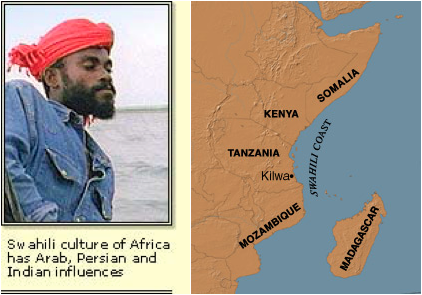
“The meaning of the name Zanzibar is also known. The Swahili coast — that area of land from southern Somalia to northern Mozambique, was known as Zingion from about the six century AD. It came to be known by the same name by Arab travellers from the 9th to the 15th centuries.” – Zanzibar and the Swahili coast from c. 30,000 years ago, By Felix Chami, PG 16
The Swahili Coast or the Land of Zanj was well known for its trade across the Indian Ocean and it is by way of this trade that many Israelites arrived in the Far East. Despite the fact that many Israelites (Bantu Africans) were taking into eastern countries by Arabs as slaves, many more Israelites actually travelled into eastern lands, both prior to the Arab slave trade and afterwards, as sailors, merchants, mercenaries, musicians, etc. It was not uncommon for these Zanji to be promoted to high-ranking position or to even gain rulership.
Not only were the Zanji East Africans great warriors and rulers but they were also exceptional seafarers. In fact, as mariners, the East African Negro Zanji were some of the very best sailors as well was ferocious warriors. So valiant were the Zanj Negroes, who were called Sheedi in India/Balouchistan region, that it was said that only one Sheedi man was needed on board a ship to deter pirates at sea.
“The Siddis were a tightly knit group, highly aggressive, and even ferocious in battle. They were employed largely as security forces for Muslim fleets in the Indian Ocean, a position they maintained for centuries. The Siddi commanders were titled Admirals of the Mughal Empire, and received an annual salary of 300,000 rupees. According to Ibn Battuta (1304-1377), the noted Muslim writer who journeyed through both Africa and Asia, the Siddis “are the guarantors of safety on the Indian Ocean; let there be but one of them on a ship and it will avoided by the Indian pirates and idolaters.”

An African Indian Community in Hyderabad: Siddi Identity, Its Maintenance and Change, By Ababu Minda Yimene, PG 82

16th and 17th century islamic minitature paintings showing two formerly enslaved Zanj East Africans that would become powerful leaders of the Deccan sultanate in India, (LFT) Sultan Ikhlas Khan and (RT) Malik Ambar.
The East African Bantus of the land of Zanj (Negroland of East African) were indeed Israelites and we have found that many of them have travelled to distant lands and operated on all levels of society—from slave to ruler. The land of Zanj was not only desirable as a location to live for various branches of Israelite Bantu people but also a land filled with valuable resources. As a result, many different nations across the Indian Ocean came to the land of Zanj to trade. The comments of a 12th century muslim scholar of the pre-colombian era demonstrate the long history of exchange between the Zanj and South East Asia.
Al-Idrisi, a Muslim geographer, cartographer and Egyptologist, in his description of the Negro-land (Bilad al-Zanj) in the the Ninth Section of the First Clime, he says:
“And the people of Q.m.r [i.e. the Khmer] and the merchants of the territories of Maharaj [i.e. Malaysia] come to them, associate with them and trade with them [the Zanj].” – Islamic Studies, Volume 3, By Islamic Research Institute, 1964, PG 207
“Ancient Chinese texts also mention ambassadors from Java presenting the Chinese emperor with two Seng Chi (Zanji) slaves as gifts, and Seng Chi slaves reaching China from the Hindu kingdom of Sri Vijaya in Java” – Africa in the Iron Age: c.500 BC-1400 AD (Cambridge University Press: 1975), By Roland Oliver, PG 192

“Since the days of our fathers have we been in a great trespass unto this day; and for our iniquities have we, our kings, and our priests, been delivered into the hand of the kings of the lands, to the sword, to captivity, and to a spoil, and to confusion of face, as it is this day.” – Ezra 9:7
Not only did the Zanji trade with and travel to Southeast Asia but the also reached as far as China and Japan. The Swahili Coast and the land of Zanj was the spring-board catapulting East African Bantu’s into the far East. In fact, according to Al Jahiz, the people of China were considered to be blacks, or at least, large populations Blacks (Zanji/Negroes) could be found in China and South East Asia.
“The blacks are more numerous than the whites. The whites at most consist of the people of Persia, Jibal, and Khurasan, the Greeks, Slavs, Franks, and Avars, and some few others, not very numerous; the blacks include the Zanj, Ethiopians, the people of Fazzan, the Berbers, the Copts, and Nubians, the people of Zaghawa, Marw, Sind and India, Qamar and Dabila, China, and Masin… the islands in the seas between China and Africa are full of blacks, such as Ceylon, Kalah, Amal, Zabij, and their islands, as far as India, China, Kabul, and those shores.” – Islam, from the Prophet Muhammad to the Capture of Constantinople: Religion and society, By Bernard Lewis, PG 214
Other research has also supported the fact that Zanji traded with, and travelled to the Far East.
“Ming porcelain was found in many African countries. Celadon and blue and white porcelain were excavated in Al- Fustat Site in Egypt, Somali, Ethiopian ancient city sites, and an ancient site near Kenya. Blue and white porcelain of Jingdezhen were found in Tanganyika site and Dehua kiln of Jingdezhen.” – gotheborg.com

The Chinese traded with East Africans/Zanjis (with heavy populations of Israelite descendants among them) along the Swahili Coasts of East Africa’s Negroland

Although the Chinese envoys traded on the East Coast, they received goods from deep in the interior of Africa.

Many goods (exotic plants & animals, ivory, gold, iron ore, weapons, etc..) from Southwest Africa and Bantu African in general, found their way to east African shipping ports.
The East African trade routes connected with the West African trade routes, supplying a variety of goods and culture to be exchanged at the East African coastal ports. However, despite the diversity found amongst the peoples from East to West Africa, history provides evidence of a deep underlying cultural and herititary connection between the two—the Hebrew language.
In our attempts to find further evidence in support of the Hebrew Israelites’ migration in to East Africa, and African in general, we find very strong support in the writings of a certain Greek navigator. In his description of the peoples of both East and West, Eudoxus of Cnidus makes some surprising observations. While circumnavigating Africa, from East to West, Eudoxus noted that the East African Zanji’s and the West African Negroes not only share similar customs, style of dress and physical appearance, but that they also spoke the same language! Could they have been the same people? The reported observations of the Greek Eudoxus would seem to answer with a resounding, YES!
It appears as if the Bantu Expansion can be completely credited to the Israelite migration into Africa and subsequent conquest of its indigenous Hamitic peoples. The Bantus populated sub-Saharan Africa by stretching across its Eastern and West coasts, as well as establishing communities deep within the interior of the continent.
“… The Bantu and the Hebrew drew upon the same prehistoric sources of culture and religious practices,” and again: “There are many indications that there was at least a common source from which arose the Hebrew culture and that this also descended from that. There are many place names in Palestine and more especially in the eastern end of the Arabian peninsula that resemble Bantu names.” – Anthropological Series of the Boston College Graduate School, Volume 3, Boston College Press, PG 360

The Bantu Expansion parallels the biblical records and tribal traditional migration routes of the ancient Hebrew Israelites.
Let us continue to follow the journey of the East African descendants of the Hebrew Israelites, following down the Nile and Great Rift Valley.



As we continue following the trail of the Israelites down the Nile River and Great Rift Valley we arrive in the territory of modern Kenya. Within Kenya, we encounter a few different tribes of East Africans who claim descent from the ancient Israelites. One of the tribes is the Kikuyu.

“Kikuyu, also called Giguyu, Gekoyo, or Agekoyo, are a Bantu-speaking people who live in the highland area of south-central Kenya, near Mount Kenya” – Encyclopedia Britannica
“As regards Kenya, Father Ciatti states: “Comparing this belief with the laws and customs of the Hebrews, it can easily be concluded that the Agekoyo [Kikuyu] have had some contact with the Hebrews after their departure from Egypt, or we might perhaps say, from a Hebrew branch that had separated itself from the Hebrew people before the entrance into the Promised Land.”” – Anthropological Series of the Boston College Graduate School, Volume 3, Boston College Press, PG 361



Leviticus: The Priestly Laws and Prohibitions from the Perspective of Ancient Near East and Africa, By Johnson M. Kimuhu, PG 362-363

The Masai people of Kenya and Tanzania are the neighbors of the Kikuyu people. Although the Masai are not considered to be Bantu they seem to share many common features and cultural customs of the Hebrew Israelites, just as the Kikuyu do. In fact, some of these Hebrew Israelite customs were taught by the Kikuyu to the Masai people.

The London Quarterly Review, Volume 6; Volume 108, edited by William Lonsdale Watkinson, William Theophilus Davison, PG 10

The Masai carry staffs which was customary of the ancient Israelites. “And thus shall ye eat it; with your loins girded, your shoes on your feet, and your staff in your hand; and ye shall eat it in haste: it is the LORD’S passover.” – Exodus 12:11

The Masai of Kenya/Tanzania identify with the ancient Israelites and use the Kudu Ram Horn as the Israelite Shofar.

Not only did the Masai adhere to strict dietary rules similar to those of the Hebrew Israelites but they also burned their meat with fire in order to remove blood from the food. The Israelites practiced the same custom.

Nomadic Israelites Herdsman followed the Nile River and the Great Rift Valley southward on the East Africa coast, establishing various communities and tribal branches along their southern route.
Kenya and Tanzania are both part of the African Great Lakes region. The Great Lakes region of East African is surrounded by other Bantu and East African peoples who also claim to be descendants of the Hebrew Israelites as well, such as the a Hutu and Tutsi people of Rwanda, Burundi, and the eastern Democratic Republic of the Congo.

Purity and Exile: Violence, Memory, and National Cosmology among Hutu Refugees in Tanzania, By Liisa H. Malkki, PG 100
Interestingly enough, and in parallel comparison to the relationship between the Nigerian Yoruba and the Igbo, the Tutsi rivals of the Hutu peoples also claim Israelite ancestry. Many wars have been fought between the two groups but ancient history proves their common ancestral connections.

Talking Or Fighting?: Political Evolution in Rwanda and Burundi, 1998-1999, By Filip Reyntjens, PG 20
Just south of Kenya we find the modern country of Tanzania. Tanzania is home to many different Bantu African tribes that are descended from the Hebrew Israelites. The peoples of Tanzania played an integral role in East African trade with the Arab world and the Far East. They also had many cultural and religious affinities with the ancient Israelites of whom they were descended from.

Anthropological Series of the Boston College Graduate School, Volume 3, Boston College Press, PG 354
The Bahaya people were not only Israelites, but they were also early pioneers in the production of Steel!
The Bahaya people’s advanced knowledge of metallurgy and the ability to produce Steel from iron blast furnaces allowed them to produce superior quality tools and weapons. This in turned allowed them to be more successful in agricultural endeavors and warfare. Knowledge of the production of steel tools and weapons contributed greatly to the Bantu/Israelite Exanpsion in Africa and into foreign lands. The Bahaya traded these superior goods, from the East coast of Africa, to Arabs, Persians, Chinese, and other foreign merchants.

The Bantu migrations and the origin and spread of African Iron working closely resembles the Israelite migrations, from Syria/Palestine, into Africa.

Moving even further south along the East Africa Coast we finally end up in the Mozambique, Zimbabwe and South African region. Although there are many Bantu peoples in the area, one of the Bantu peoples that have some of th strongest and most recognized claims to ancient Israelite heritage are the Lemba people.

The Lemba, wa-Remba, or Mwenye are a southern African ethnic group found in present-day Zimbabwe and South Africa, with smaller, little-known branches in Mozambique and Malawi… The name “Lemba” may originate in chilemba, a Swahili word for turbans worn by some Bantu peoples, or lembi, a Bantu word meaning “non-African” or “respected foreigner”.


The Lemba claim to have travelled an alternate route of travel to South East Africa, than the one we have previously discussed. They are believed to have traveled southward, from Israel, through Arabia before settling in Yemen. From Yemen they then travel by sea and/or by land into their current location in the Southeast African territories.
The Lemba are not the only people in the area to have been considered to be connect with the ancient Hebrew Israelites. Many of the other groups surrounding the Lemba as have Israelite ancestry that arrived by the routes we have discussed previous to the Lemba. Some of the different African tribal groups perhaps have Israelite ancestry that arrived and settled in the South East African regions as early as the times of King Solomon, King David or further back in ancient history. Evidence of the Israelite presence in the region can be found in the magnificent architecture found in the ruins of the stone city of Great Zimbabwe.

“The first thing that draws the visitor’s eye is the high level of craftmanship that went into the construction of the site. Skillful stonemasons built massive dry-stone walls, incorporating large natural boulders into some of the structures. Walls extend between rocky outcrops and massive rocks, forming a maze of narrow passageways and the enclosures.”

LFT to RT, from top to bottom: Turkana of Kenya, Ndebele of South Africa, Gadaba of India, Bonda of India, Kayan of Tibet-Burma-Thailand

The map above highlights (in red) the territories of the tribes that wear the neck rings. These highlighted areas also correspond with the territories of the Austronesian language family.

The neck rings of indigenous peoples, who were once consider savages, are now considered to be high fashion
Both the Ndebele people of South Africa (a bantu people) and the Turkana people of Kenya/Ethiopia (related to the Maasai), who wear the Neck Rings and reside in East Africa, have strong Israelite associations and lineage. Their clear influence in the Indian Ocean region is a result of their travel, trade and colonization of these lands where their descendants would also bring the Israelite bloodline.
The Zulu people have also been identified by many historians and scholars as being the descendants of Israelites as well.


Judaising Movements: Studies in the Margins of Judaism in Modern Times, edited by Tudor Parfitt, Emanuela Semi
The territory of the Zulu people borders the modern country of Mozambique, which is where one of Japan’s early Negro Samurai was taken from. It should be understood that the grand majority of Southeastern Africa was populated by Bantu peoples, all of whom have strong Israelite connections. Japan’s samurai Yasuke from Mozambique was descended from this same stock of people.

Nanban trade with Portuguese westerners landing in Japan

Portuguese Nanban trade ships brought a strong wave of Africans (Bantu Israelites) as well as Black Sephardic Jews to the Far East.
With the information that we have covered concerning the Bantu Expansion, its relations to ancient Israelite migrations, and their movement down the East coast of Africa, it is not difficult to conclude that Yasuke was a Bantu descendant of the ancient Israelites. He is one of many Israelites that we will discover that traveled to Japan

According to Histoire Ecclesiastique Des Isles Et Royaumes Du Japon, written by François Solier of the Society of Jesus in 1627, Yasuke was a Muslim from Mozambique
In conclusion to our East African Israelite article we will make our last stop on the Island of Madagascar. This island is said to have many different tribes that are descended from the ancient Israelites. The majorities of the peoples who populated the Island migrated from branches of different East African Israelite tribes looking for new lands as a result of the Bantu Expansion/Israelite migrations.
We have finally reached the end of this particular article on East Africa and its Israelites descendants. We discovered how the majority of the Israelites migrated into East Africa by following the Nile River and Great Rift Valley southward, from Egypt to Kush and further.
For those who still find it hard to believe that such a migration is implausible, the same route was travelled by a modern scholar, that walked the Nile from top to bottom (CLICK HERE). His success provides further evidence that it was indeed possible for the Israelites to have arrived in their modern East African territories by traveling down this ancient route. We now know for certain that the Bantu are Hebrew Israelites and that from West Africa’s Negroland to East Africa’s Land of Zanj, Israelites can be found. These are the same people who were target for slavery and fulfill the Biblical prophesy of Deuteronomy 28:15-68, being scattered all over the world into all kingdoms.
Question comments concerns?
Contact: NasiResearch@Instruction.com
OTHER RELATED TOPICS
The Bantu Branch of Africans are Hebrew Israelites pt 1
The Bantu Branch of Africans are Hebrew Israelites pt 2
Black Buddha Israelite & The Israelite Buddhist
Shennong the Chinese-Israelite Flame Emperor
The Israelite Fire Nation: Chiyou and the Battle of Zhoulu
Indigenous Peoples of the Americas and Caribbean are Israelites




















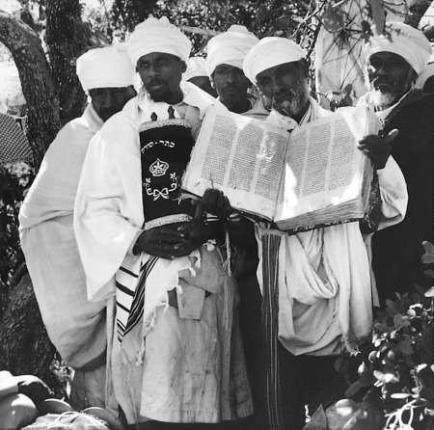














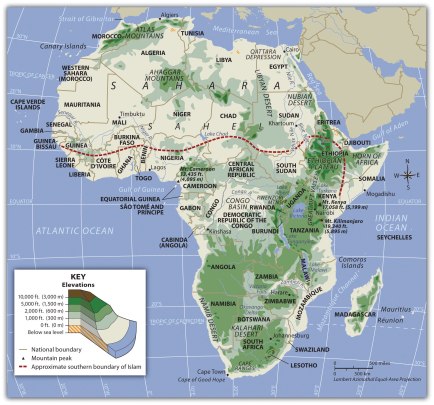


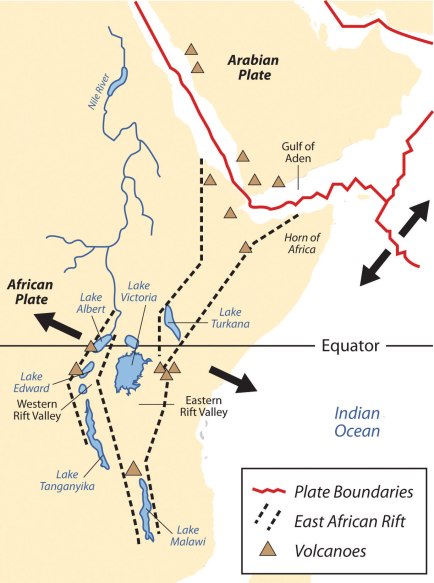



























![east-africa-kenya-tanzania-seychelles-zanzibar-madagascar-sudan-1683-old-map-[2]-194959-p](https://arianasiresearch.files.wordpress.com/2015/10/east-africa-kenya-tanzania-seychelles-zanzibar-madagascar-sudan-1683-old-map-2-194959-p.jpg?w=434&h=152)





























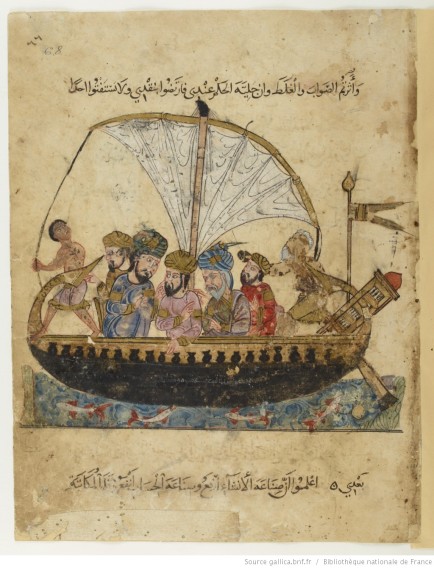





















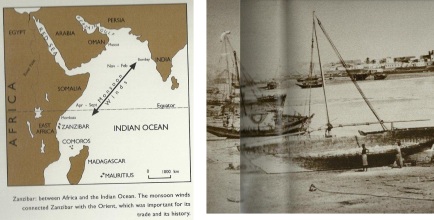












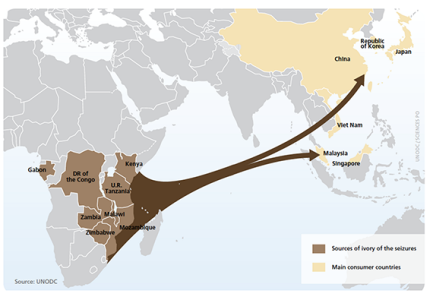
























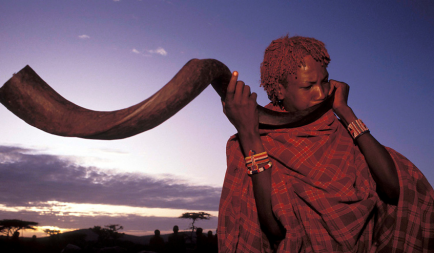

























































































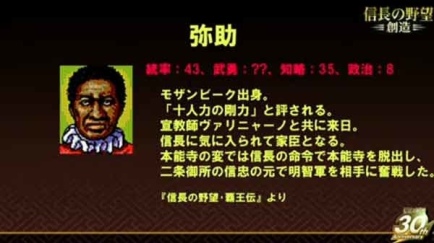









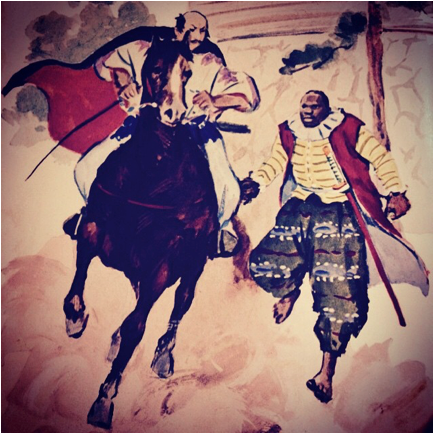















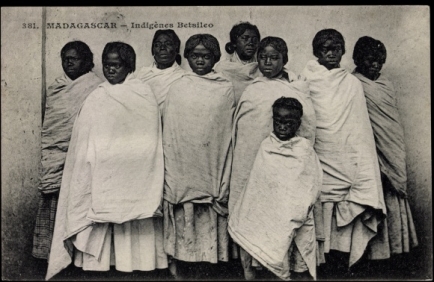







Great read. Thanks for clarifying where most of our African Bantu traditions stem from. Glad to know I’m a part of Hebrew, Almighty God’s chosen people.
LikeLiked by 1 person
I am Hmong, great great decedents of Chiyou’s people, now living in Georgia. It’s interesting to read upon stuff like this that just blows you away with correlation of the past, our history. Never in a million year would I suspect being out of Africa or the middle east by way of origin but this has definitely open my eyes “the possibilities are endless.”
LikeLiked by 1 person
I have come to realize .Wherever the children of Jacob settled .The white man came and claim that they are savages and they need civilization .They did this as they took minerals and farming on their lands or massacre murder like for the native Americans .Its clear they wanted us never to know who we realy are and how powerful we are if we all turn to the God of our fore fathers.These people are wicked they erode our people’s culture and to erase the knowledge of their origin by forcing us into christianity.Is it just me that see it that way ?
LikeLike
12 tribes
10 lost=ppl of African descent in the Americas and elsewhere
Other 2 never lost= dogon/dagara & Bantu .
You hit it right in the head
LikeLike
Fantastic website. A lot of useful info here. I’m sending it to several buddies ans additionally sharing in delicious. And obviously, thank you on your sweat!
LikeLike
Awsome info and straight to the point. I am not sure if this is actually the best place to ask but do you people have any ideea where to get some professional writers? Thx 🙂
LikeLike
As a Newbie, I am permanently searching online for articles that can aid me. Thank you
LikeLike
Reblogged this on Black History & Culture.
LikeLike
Reblogged this on Tarig Anter on Protect & Reinvent Democracy and commented:
Great Article and must be read along with my article “The History of Israel and Judaism Debunked”
LikeLike
Very efficiently written post. It will be helpful to everyone who usess it, as well as myself. Keep doing what you are doing – can’r wait to read more posts.
LikeLike
Magnificent goods from you, man. I have understand your stuff previous to and you’re just extremely fantastic.
I actually like what you’ve acquired here, really like what you are stating and the way in which you say it.
You make it entertaining and you still care for to
keep it smart. I cant wait to read far more from you.
This is really a wonderful web site.
LikeLike
Pingback: The East African Israelites of Zanjiland - Vorgeschlagene Nachrichten